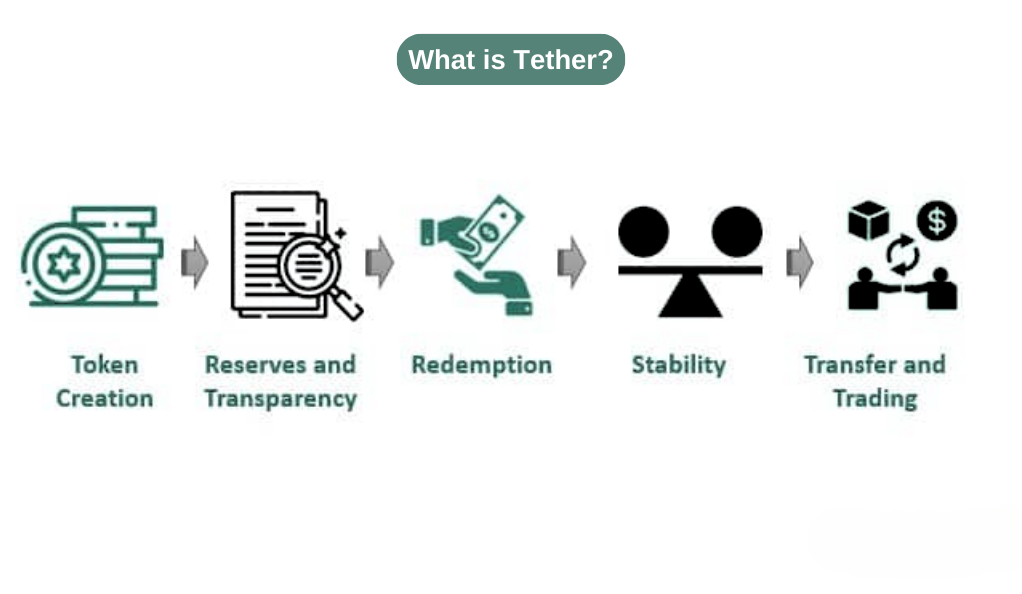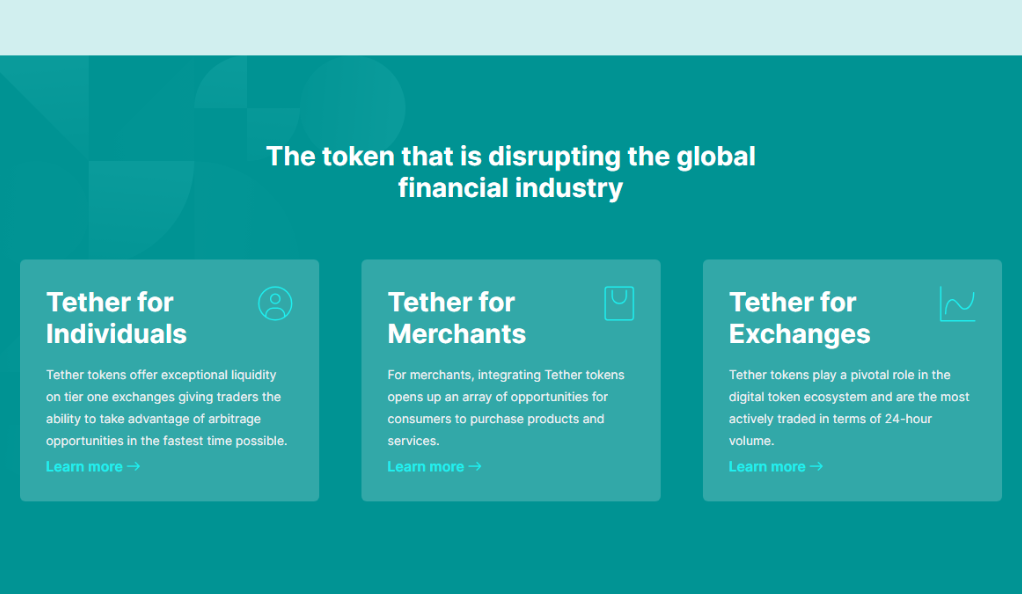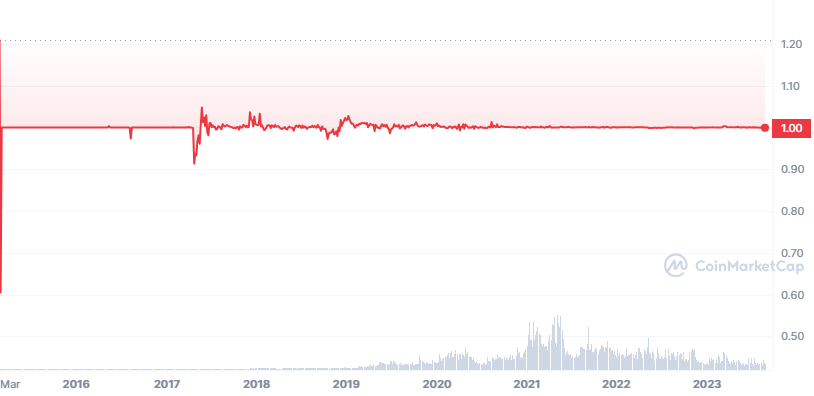Tether USDt (USDT) Price Prediction & Analysis: A Comprehensive Insight
Tether (USDT) has become a cornerstone in the cryptocurrency market, often serving as a bridge between traditional fiat currencies and the volatile world of digital assets. But what exactly is USDT, and why has it garnered such attention and trust from investors and traders alike? Let’s delve deep into the world of Tether.
What is Tether (USDT)?
Tether (USDT) is a type of cryptocurrency known as a stablecoin. The primary objective of a stablecoin is to maintain a stable value, typically pegged to a traditional currency like the US dollar. In the case of USDT, its value is pegged 1:1 to the US dollar, meaning for every USDT token in circulation, there should be an equivalent amount of USD held in reserve.

Why was USDT Created?
The volatile nature of cryptocurrencies like Bitcoin and Ethereum can be a deterrent for many potential investors and users. Price swings of 10% or more in a single day are not uncommon. Such volatility can be problematic for users who want to transact or trade regularly. Enter USDT. By pegging its value to a stable asset, USDT offers the benefits of digital currency – fast transactions, security, and transparency – without the extreme price fluctuations.
How Does USDT Maintain its Peg to the US Dollar?
| Mechanism | Description |
|---|---|
| Reserves | Tether Limited, the company behind USDT, claims to hold reserves that back each USDT in circulation. This means for every USDT token, there’s a US dollar in a bank account, ensuring its value remains stable. |
| Audits | To ensure transparency and trust, Tether periodically undergoes audits to verify its reserves. These audits aim to prove that the company holds enough USD to back each USDT in circulation. |
| Redemption | Users can theoretically redeem USDT for USD, further solidifying its peg. However, the redemption process has been a topic of discussion and scrutiny. |
USDT Across Multiple Blockchains
While initially launched on the Bitcoin blockchain via the Omni Layer protocol, USDT has expanded its presence and now operates on multiple blockchains, including Ethereum (as an ERC-20 token), Tron, EOS, and more. This multi-chain approach ensures broader accessibility and usability across various crypto platforms and applications.
| Blockchain | USDT Version |
|---|---|
| Bitcoin (Omni) | Original USDT |
| Ethereum | ERC-20 USDT |
| Tron | TRC-20 USDT |
| EOS | EOS-based USDT |
The Mechanics Behind USDT’s Stability
Understanding the stability of Tether (USDT) requires a deep dive into the mechanisms and strategies employed by Tether Limited, the company behind USDT. While the concept of a stablecoin might seem straightforward, ensuring its stability in the dynamic world of cryptocurrencies is a complex endeavor.

The Role of Reserves
At the heart of USDT’s stability is the reserve system. Tether Limited claims that for every USDT issued, there is an equivalent amount of USD held in reserve. This 1:1 pegging is what gives USDT its value and trustworthiness.
- Types of Reserves:
- Cash Reserves: Physical cash held in bank accounts.
- Cash Equivalents: Short-term, highly liquid investments that can be quickly converted to cash.
It’s worth noting that the exact composition of these reserves has been a topic of debate and scrutiny, with critics questioning the ratio of physical cash to cash equivalents.
Regular Audits
To maintain trust and transparency, Tether Limited has committed to regular audits of its reserves. These audits are conducted by external parties and aim to verify:
- The total amount of USDT in circulation.
- The corresponding amount of USD held in reserves.
However, the frequency and thoroughness of these audits have been points of contention in the crypto community.
Arbitrage Mechanisms
Arbitrage plays a crucial role in maintaining USDT’s peg to the USD. If USDT’s price deviates from $1 on exchanges, traders can capitalize on this difference through arbitrage, buying or selling USDT until its price returns to the $1 mark. This continuous process ensures that USDT’s price remains close to its peg.
Redemption and Issuance Process
Tether Limited has a process in place for the issuance and redemption of USDT:
- Issuance: When a user wants to acquire USDT, they send USD to Tether Limited, which then issues the equivalent amount of USDT to the user.
- Redemption: Conversely, if a user wishes to redeem USDT for USD, they send their USDT to Tether Limited, which then provides the user with the equivalent amount in USD.
This bidirectional process further solidifies the 1:1 pegging of USDT to the USD.
Market Confidence and Perception
The stability of USDT is also influenced by market perception. If users believe in the integrity of Tether Limited and the 1:1 pegging, they are more likely to use and trust USDT. Conversely, any negative news or doubts about Tether’s reserves can lead to fluctuations in USDT’s stability.
Historical Price Analysis of USDT
Tether (USDT) stands out in the cryptocurrency landscape due to its relatively stable price. However, like all assets, it has experienced moments of fluctuation. To understand its stability and occasional deviations, we must delve into its historical price trends.

USDT’s Inception and Initial Stability
When USDT was introduced in 2015, its primary goal was to serve as a bridge between fiat currencies and cryptocurrencies. From its inception until late 2017, USDT maintained a relatively stable price, hovering close to the $1 mark, with minor deviations.
Notable Fluctuations
While USDT is designed to be stable, it has seen periods of fluctuation:
- October 2018: USDT briefly dropped to $0.85 on some exchanges due to rumors about Tether Limited’s banking relationships and concerns about its reserves. This event highlighted the importance of market sentiment in USDT’s stability.
- April 2019: USDT’s price slightly exceeded $1 due to increased demand in certain markets, especially in regions with stringent capital controls.
Comparison with Other Stablecoins
| Stablecoin | Peg | 2018 Lowest Price | 2019 Highest Price |
|---|---|---|---|
| USDT | USD | $0.85 | $1.03 |
| USDC | USD | $0.97 | $1.01 |
| DAI | USD | $0.95 | $1.02 |
| PAX | USD | $0.98 | $1.01 |
From the table, it’s evident that while all stablecoins aim for a $1 peg, minor fluctuations are common. However, USDT’s deviations have been more pronounced, likely due to its larger market cap and higher scrutiny.
Factors Influencing Minor Fluctuations
- Market Demand: High demand can push USDT’s price slightly above $1, while low demand can pull it below the peg.
- Liquidity: In exchanges where USDT trading volume is low, price deviations can be more pronounced.
- External News and Events: News about Tether Limited, regulatory actions, or significant market events can influence USDT’s price temporarily.
The Role of Arbitrage in Price Correction
Whenever USDT’s price deviates from the $1 mark, arbitrageurs step in. By buying low and selling high across different exchanges, they can profit from the price difference. This activity also helps bring USDT’s price back to its intended peg.
Factors Influencing USDT’s Price Predictions
The stability of Tether (USDT) is a result of a delicate balance between various influencing factors. While its peg to the US dollar provides inherent stability, external and internal elements can sway its position. Let’s explore these factors in detail.
External Market Factors
- Cryptocurrency Market Volatility: In times of high volatility, traders often flock to stablecoins like USDT as a safe haven. This increased demand can cause minor price fluctuations.
- Global Economic Conditions: Economic downturns or crises can lead to increased demand for stable assets, including USDT.
- Interest Rates: Changes in interest rates, especially in the US, can influence the attractiveness of holding USDT versus other assets.
Regulatory Challenges and Their Impact
- Government Scrutiny: Increased regulatory scrutiny on Tether Limited or stablecoins in general can influence market sentiment and, consequently, USDT’s stability.
- Legal Proceedings: Any legal actions against Tether Limited or related entities can lead to temporary fluctuations in USDT’s price.
- Global Stablecoin Policies: As governments around the world formulate policies around stablecoins, these regulations can impact USDT’s adoption and stability.
The Role of Competing Stablecoins
- Market Share: The introduction and growth of other stablecoins can affect USDT’s dominance and its price stability.
- Trust and Transparency: If other stablecoins offer better transparency or are perceived as more trustworthy, they might attract users away from USDT.
Technological Advancements and Integration
- Blockchain Upgrades: Technological advancements in the blockchains supporting USDT can influence its transaction speeds, fees, and overall usability.
- Integration with Financial Systems: The more integrated USDT becomes with traditional financial systems and platforms, the more stable and widely adopted it is likely to be.
Public Perception and Media Influence
- Media Coverage: Positive or negative media coverage about Tether Limited, its reserves, or USDT can sway public perception and influence its price.
- Community Trust: The overall trust of the cryptocurrency community in USDT and Tether Limited plays a significant role in its stability.
Internal Management and Operations
- Transparency Initiatives: Efforts by Tether Limited to increase transparency, such as regular audits and open communication, can bolster USDT’s stability.
- Operational Decisions: Decisions related to reserve management, token issuance, and redemptions can influence USDT’s price.
Expert Predictions and Market Sentiments
In the ever-evolving landscape of cryptocurrencies, expert opinions and market sentiments play a pivotal role in shaping the trajectory of assets, including stablecoins like USDT. Let’s delve into the insights and predictions from industry leaders and gauge the overall sentiment surrounding Tether (USDT).
Insights from Industry Experts
- Bullish on Stablecoins: Many experts believe that the future of cryptocurrencies lies in stablecoins. Their stability, combined with the benefits of blockchain technology, makes them ideal for mainstream adoption.
- Reserve Transparency: Some financial analysts emphasize the need for Tether Limited to be more transparent about its reserves, suggesting that increased transparency could bolster USDT’s position in the market.
- Adoption in Financial Systems: Fintech leaders predict that USDT and other stablecoins could play a significant role in the future of cross-border transactions and remittances, given their speed and low fees.
Analysis of Market Sentiment
- Social Media Trends: Platforms like Twitter and Reddit often buzz with discussions about USDT, especially during significant market events. Positive sentiment usually correlates with increased trust and stability, while negative sentiment can lead to temporary price fluctuations.
- Crypto Forums and Blogs: These platforms offer in-depth discussions and analyses. The general sentiment here can provide insights into the more informed and technical segment of the crypto community.
Predictive Analytics and AI Forecasts
Some fintech firms use AI and machine learning to predict the future behavior of assets, including USDT. While these predictions are based on data, they should be taken with a grain of caution:
- Stability Predictions: Most AI models predict that USDT will maintain its peg to the US dollar in the foreseeable future, with minor fluctuations.
- Adoption Rate: Predictive models suggest a steady growth in USDT adoption, especially in regions with unstable local currencies.
Potential Challenges and Opportunities
- Regulatory Hurdles: Experts believe that the biggest challenge for USDT is potential regulatory crackdowns. How Tether Limited navigates these challenges will significantly influence USDT’s future.
- Mainstream Adoption: On the flip side, the biggest opportunity lies in mainstream adoption. If USDT can become a preferred choice for online transactions, its position in the market will be further solidified.
Risks and Concerns Surrounding USDT
Tether (USDT), while being a beacon of stability in the volatile cryptocurrency market, is not without its share of controversies and concerns. It’s essential for investors and users to be aware of these risks to make informed decisions. Let’s delve into the challenges and uncertainties surrounding USDT.
Controversies Over Reserves
- Backing Claims: One of the most significant controversies surrounding USDT is whether Tether Limited holds enough reserves to back all USDT in circulation. While the company claims a 1:1 pegging, skeptics have raised concerns about the actual reserve amounts.
- Composition of Reserves: Questions have also arisen about the nature of these reserves. Are they purely in cash, or do they include other assets? The clarity on this matter has been a point of contention.
Regulatory Scrutiny
- Global Regulatory Stance: As governments worldwide grapple with the rise of cryptocurrencies, stablecoins like USDT are under increased scrutiny. Regulatory actions can significantly impact USDT’s operations and trustworthiness.
- Legal Challenges: Tether Limited has faced legal challenges, especially in the US, regarding its operations, transparency, and claims about its reserves.
Dependence on Third-party Platforms
- Blockchain Vulnerabilities: USDT operates on multiple blockchains. Any vulnerability or issue in these blockchains can indirectly affect USDT’s operations.
- Exchange Reliance: A significant portion of USDT’s volume is on cryptocurrency exchanges. Any regulatory action or technical issue with these platforms can influence USDT’s liquidity and stability.
Market Perception and Sentiment
- Trust Issues: Any negative news or doubts about Tether’s operations can lead to a decline in trust, which can, in turn, affect USDT’s stability.
- Competing Stablecoins: As other stablecoins emerge and gain traction, they might challenge USDT’s dominance, especially if they offer better transparency or are perceived as more trustworthy.
Technological Risks
Smart Contract Flaws: For versions of USDT like the ERC-20 token on Ethereum, there’s always a risk of smart contract vulnerabilities.
Integration Challenges: As USDT expands to new platforms or undergoes technological upgrades, integration challenges can pose operational risks.
Economic Factors
- Interest Rate Fluctuations: Changes in global interest rates, especially in the US, can influence the attractiveness of holding or trading USDT.
- Economic Downturns: In times of economic crises, while many might flock to stable assets, there’s also a risk of increased redemptions, which can strain Tether’s reserves.
The Future of USDT and Stablecoins
As the digital economy evolves, the role of stablecoins, especially Tether (USDT), becomes increasingly significant. Their potential to bridge the traditional financial world with the burgeoning realm of cryptocurrencies is undeniable. Let’s explore the prospective trajectory of USDT and the broader stablecoin ecosystem.
USDT in the Evolving DeFi Landscape
- Collateral in DeFi Platforms: USDT is frequently used as collateral in various DeFi platforms, allowing users to borrow other assets or earn interest.
- Liquidity Pools: With the rise of decentralized exchanges, USDT often serves as a primary liquidity pair, facilitating smoother trades and transactions.
- Yield Farming: As DeFi enthusiasts seek optimal returns, USDT becomes a popular choice for yield farming strategies due to its stability.
Growth of Stablecoins in Global Transactions
Cross-border Remittances: Stablecoins like USDT can revolutionize cross-border transactions, offering faster transfer times and reduced fees compared to traditional banking systems.
Payment Systems: There’s a growing trend of merchants accepting stablecoins as a form of payment, given their stability and ease of conversion.
Regulatory Evolution and Stablecoins
- Central Bank Digital Currencies (CBDCs): As nations explore the idea of launching their own digital currencies, it could pose competition to stablecoins. However, it also validates the concept and could lead to increased integration.
- Global Stablecoin Framework: International regulatory bodies might develop a unified framework for stablecoins, ensuring standardized practices and increased trust.
Technological Advancements
Faster and Cheaper Transactions: As the underlying blockchains of USDT improve, users can expect even faster and cheaper transactions.
Interoperability: Future advancements might allow seamless interoperability of USDT across various blockchains, enhancing its utility.
Challenges Ahead
- Market Saturation: As more stablecoins enter the market, USDT might face stiff competition, challenging its dominance.
- Trust and Transparency: The continued success of USDT hinges on Tether Limited’s ability to maintain trust and offer transparency regarding its operations and reserves.
Broader Adoption in Financial Systems
Banking Integration: We might see traditional banks integrating USDT and other stablecoins into their systems, offering hybrid financial products.
Insurance and Hedging: Stablecoins could play a role in insurance, hedging strategies, and other financial instruments, given their stability.
Conclusion
Tether (USDT) stands as a testament to the innovative fusion of traditional finance and the digital economy. Its role as a stablecoin in the volatile cryptocurrency market has not only provided a safe haven for traders but has also paved the way for the broader adoption of digital assets in everyday transactions. The journey of USDT, from its inception to its current prominence, is intertwined with both its inherent design for stability and the external factors that have tested its resilience.
As we look to the future, the potential of USDT and similar stablecoins is vast, promising to redefine cross-border transactions, DeFi platforms, and even our traditional banking systems. However, this potential is accompanied by challenges, primarily centered around trust, transparency, and evolving global regulations. For investors, traders, and everyday users, the key lies in staying informed, understanding the intricacies of the stablecoin ecosystem, and being adaptable to the ever-evolving financial landscape.
In summary, Tether’s USDT, with its blend of stability and blockchain innovation, offers a glimpse into the future of finance. Its trajectory serves as a valuable lesson in the importance of trust, the power of technology, and the endless possibilities when the two converge. As the world of finance continues to evolve, USDT will undoubtedly play a pivotal role in shaping its direction.
Bitcoin-up is dedicated to providing fair and trustworthy information on topics such as cryptocurrency, finance, trading, and stocks. It's important to note that we do not have the capacity to provide financial advice, and we strongly encourage users to engage in their own thorough research.
Read More